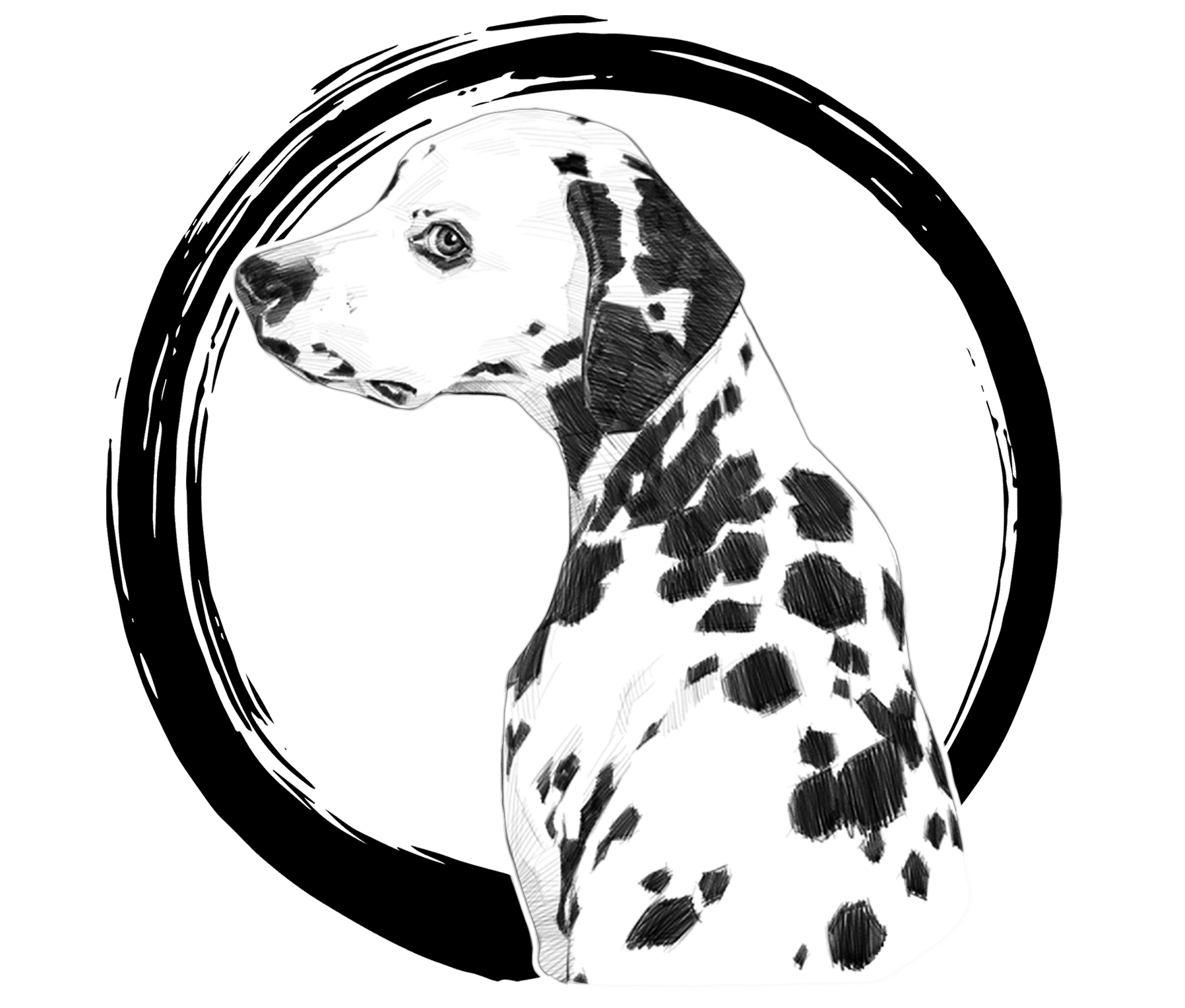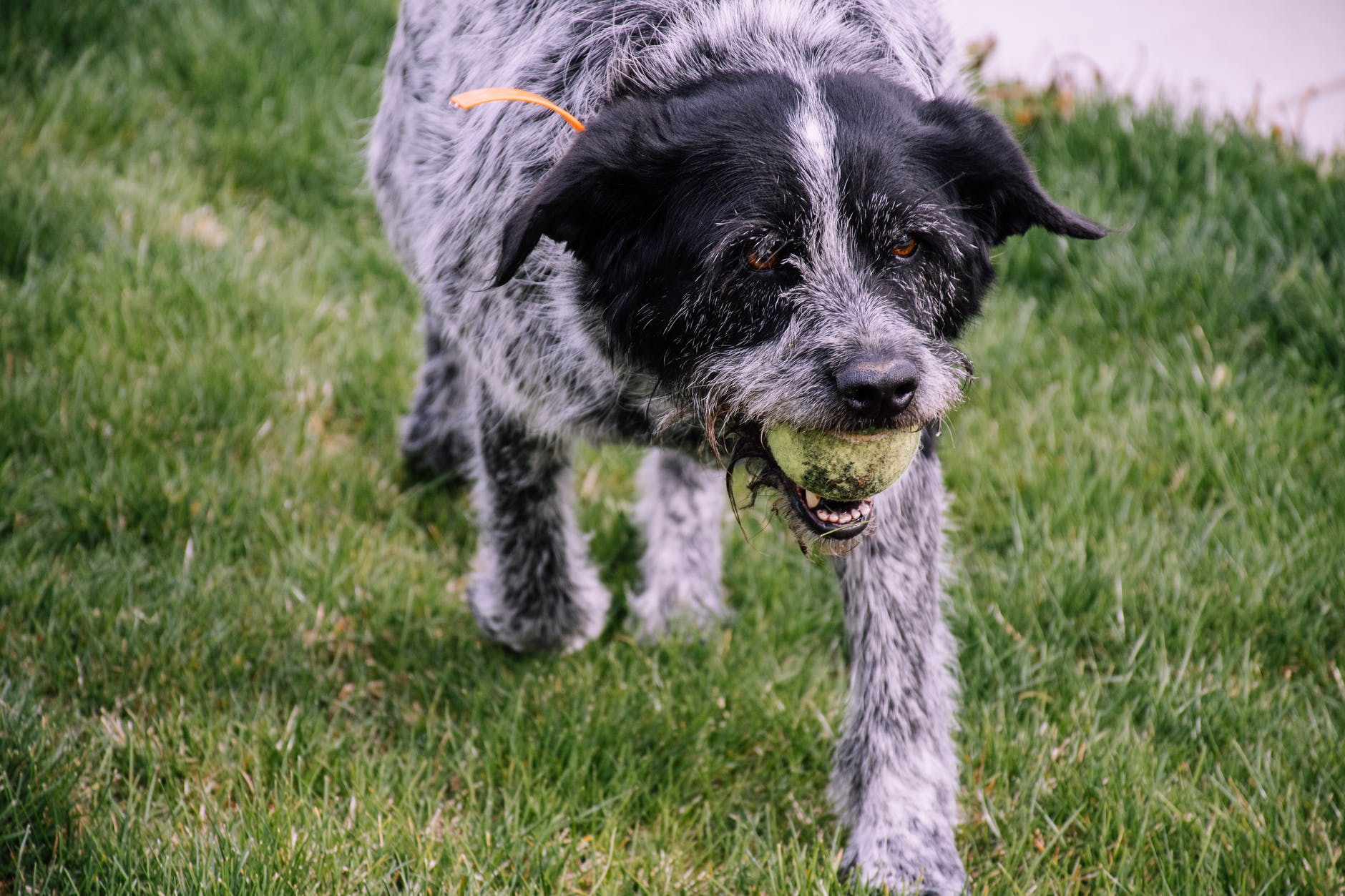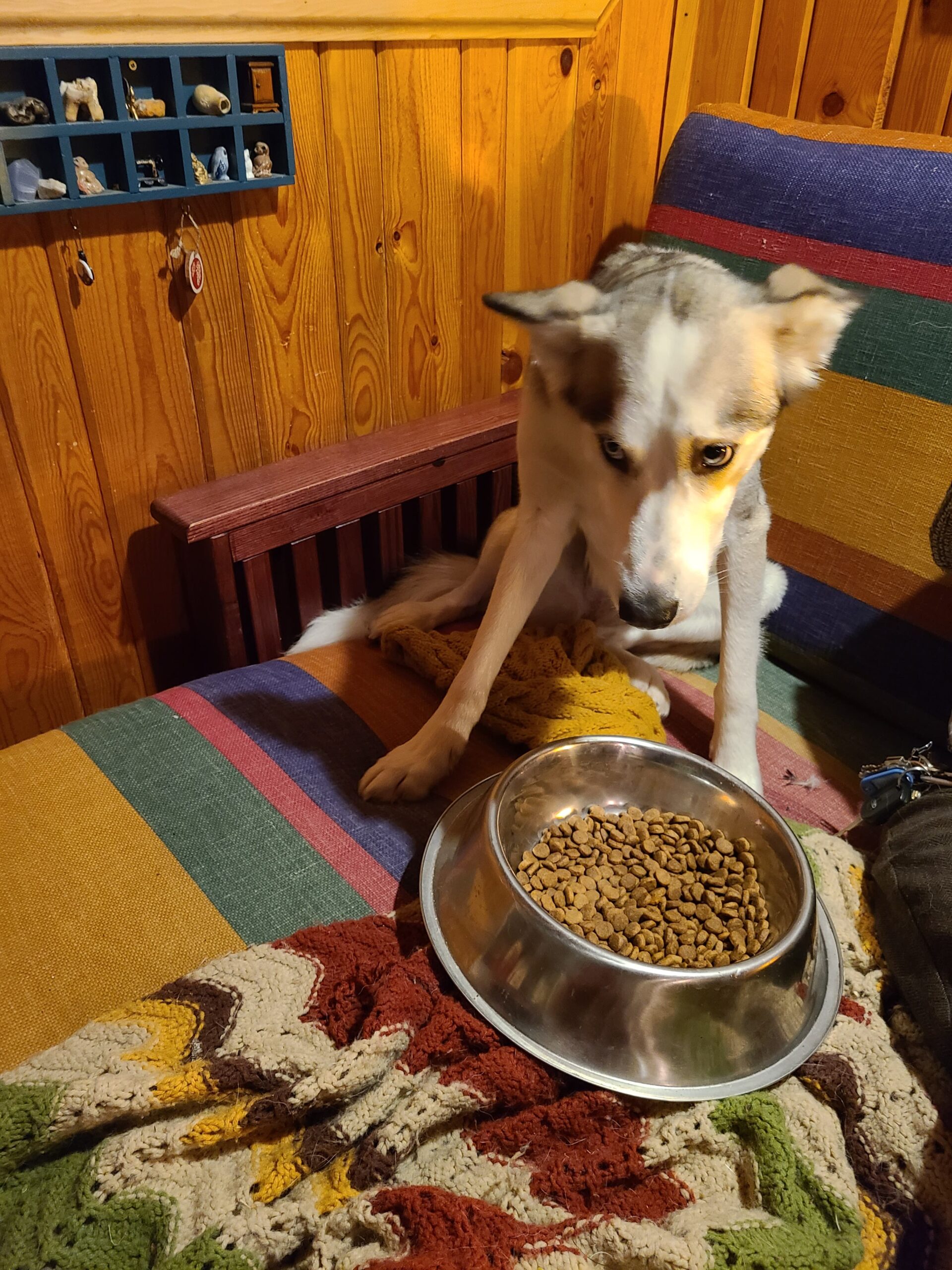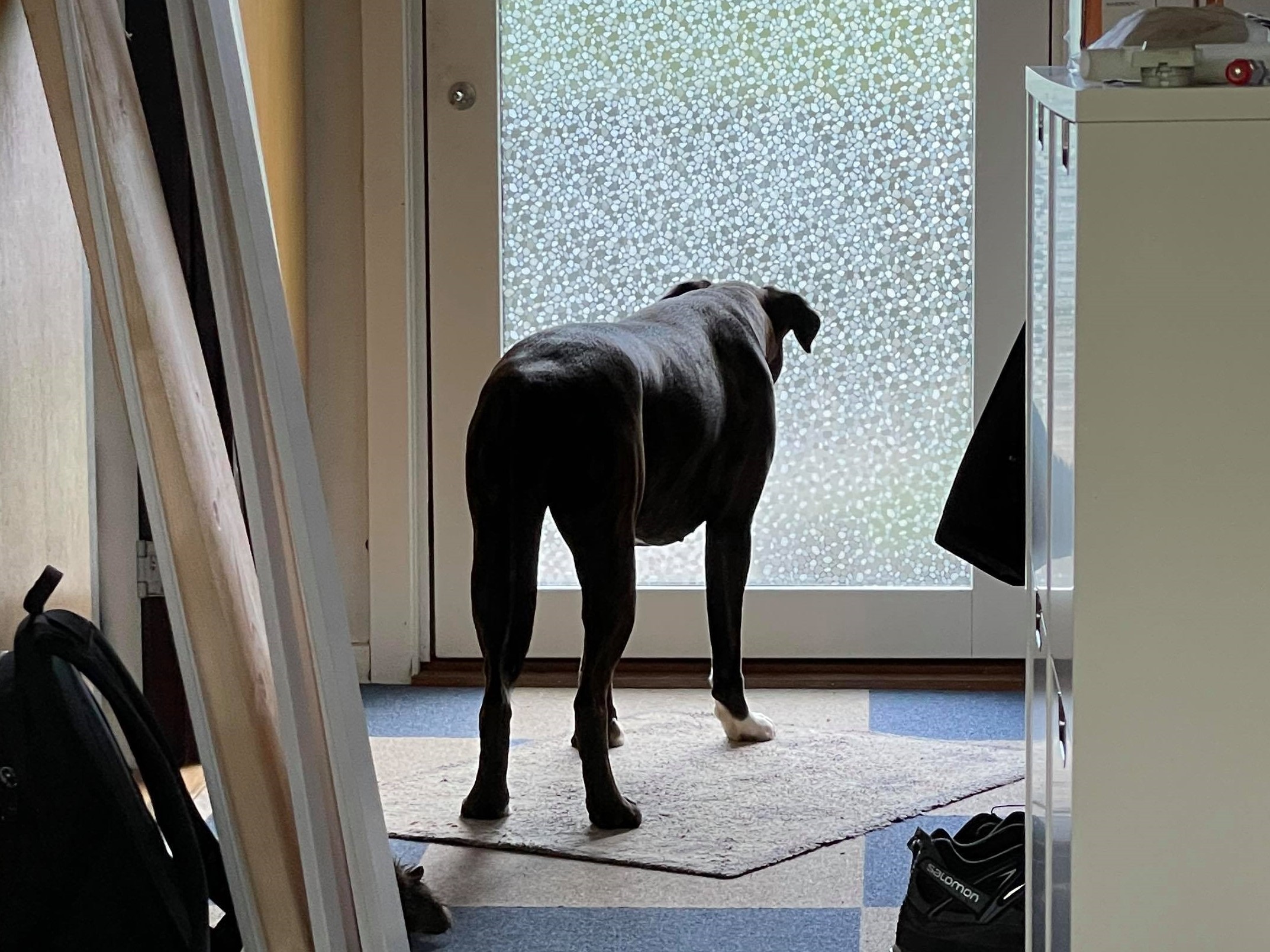Written by Melissa Varner for 101DogSpots
Welcome! I’ve written this guide to help folks get their prey-driven dogs to co-exist with their cats (and other small animals). I’ll tell you upfront that I am not a trainer – everything I have written here is based on my personal experiences both as a greyhound owner and greyhound adoption volunteer, as well as online research and input from trainers and behaviorists. I hope that by sharing my experiences, you might be able to find some helpful advice to make life with your cats and dogs a bit easier and less stressful.
Okay! So first things first. Training a dog to live with a cat peacefully is doable—usually. Some dogs just have a high prey drive, and management is your main go-to, but you can often teach a dog that while outside critters may be fair game, your inside companions are friends, not food.
I’ll describe here the process I used with my own greyhound. He was a racer down in Florida – bred and trained professionally to chase after small fluffy things. When I first brought him home, he lunged at the roommate’s cat on sight. Within six months of working with him, he was able to sleep peacefully in his crate while the cat napped a few feet away on the floor-level window sill. Your results will vary of course, but I want to show you here that it’s possible.
Tools Needed
- High-value treats, the best you’ve got. Pull out the tuna, the chicken liver, the peanut butter, whatever your dog loves more than life itself. This can often be food but doesn’t have to be. Use whatever currency your dog places the most value in.
- A clicker or verbal marker – if you’ve got questions about how these work, feel free to ask. They’re very easy and take very little time to set up.
- A leash; preferably a long line, but a standard 6’ will do.
- The 3 most valuable things you will ever need in dog training: patience, repetition, and consistency.
Precautions for the Cat
Make sure the cat has places up high so it can escape or just get some respite, but I don’t suggest giving the cat enough room to bolt. That motion can trigger a prey instinct, so keep the cat calm. Take breaks before you see things getting out of hand. Small, good doses are better than longer doses that go bad.
Precautions for the Dog
Exercise first! Both physical and mental. You don’t want any excess energy aimed at the cat. The dog should be in a calm, friendly state of mind. If this is after a play session, give the dog time to wind down and switch gears so he doesn’t think cat time is more play time.
Procedure
Start far away: I started all the way across the open layout of my apartment, just within range of sight; go as far as you can with whatever set-up you have.
Redirect: He pulled the leash taut and stood at attention, but I redirected him at every chance I got, offering toys, affection, new things to smell (sometimes I just pulled random things off my desk or out of the trash for this), trick cues—anything that would grab his attention.
Block/break eye contact: Sometimes I had to block eye contact with my body to get him to look at me or just wait like a statue until he broke eye contact himself, but every fraction of a second not focused on the cat was an opportunity.
Mark: I clicked for any bit of attention or activity directed at anything but the cat and rewarded heavily. Remember, instead of a click here, you can use a verbal marker, if that’s your preference. More on verbal markers at the end.
Repeat: Here’s where that patience, repetition, and consistency come in: Gradually, these seconds of distraction grew more frequent and lasted just a bit longer each time, and every reward in the right direction chipped away at that prey behavior, like drops of water slowly but steadily breaking down a mountain. Gradually, he started calming down at the sight of the cat and started focusing more on me – he knew by now that this exercise meant I had great things for him, and he began to anticipate that.
Increase criteria: Once we got to a point where his attention was more on anything but the cat than on the cat, we started move up a few feet, where we repeated the entire process again. We baby stepped across the room this way, closing the distance between him and the cat, depending on his attention and engagement.
Reduce criteria: We took steps back when he became frustrated or amped up, too, or just ended the session. Progress was not a straight line, and sometimes we hit little plateaus, but we kept at it. A mountain does not weather away in a week or even a month.
Smell: Exchanging items that carry each animal’s scent, and place them in the other animal’s bed or favored sleep area. –Petting my grey calmly throughout the day having just pet the cat so the smell of the cat was on my hands.
Summary: That’s basically it – Distract the dog, reward the dog for looking away and engaging with you instead, rinse and repeat as you work your way slowly towards the cat at a pace the dog is comfortable with. Over and over and over.
Frequency: I kept sessions short, especially at first. Maybe 5-10 minutes. You might start shorter if need be; the goal is to stop before the dog goes over threshold, before he gets amped up and frustrated. We did maybe 1-2 sessions a day like this. Over time, the sessions grew to be 10-20 minutes, then 30-60 minutes as I kept him tethered to me on the floor and distracted as I worked on something else. The lie down or bed cue is helpful here; so are long-lasting chews/treat dispenser like frozen Kongs. Over time, sixty minutes became an afternoon; an afternoon became a day.
Additional tips: Additional things that helped for me: –Keeping them separated when not training, preferably out of sight from each other. I made sure not to give my grey an opportunity to stare at the cat, especially while I wasn’t there to distract—I put a halt to any behavior I wanted to stop and did not let him practice it, such as sniffing and scratching at the door to the room he knew the cat was in. In fact, you might start here instead of across the room, just getting him to leave the door alone. –I stopped when he became amped up or frustrated, always. Even better, I started learning his body language and the cues he gave when he was about to get there, and I stopped before that.
Pro tips: According to folks at the greyhound adoption kennel we got him from and my reading on the subject, one way professional trainers get the greys so excited to chase, apart from their natural love of the game, is to build frustration through barriers, keeping the lure in sight but out of reach, and the greys intensely focused on that fact.
Other Resources
Whole Dog Journal is a great web site filled with articles on training, behavior, health, and more. Here is their article on introducing dogs and cats, and managing a multi-species household: https://www.whole-dog-journal.com/issues/10_6/features/Multi-Species-Household_15938-1.html
Dr. Sophia Yin has a great article on teaching dogs to be calm around chickens – surprisingly relevant to our cat issue: https://drsophiayin.com/blog/entry/how-do-i-train-my-dog-to-stop-chasing-the-chickens-cat-rat/
Karen Pryor has a great section on her web site with an FAQ here: https://clickertraining.com/what_is_clicker_training?source=nf –An article on verbal reward markers: http://noblebeastdogtraining.com/what-is-a-reward-marker-how-can-i-use-it/
***Clicker training (or using a verbal reward marker in its place) works best when you can time your clicks right at the second your dog is doing what you want him to, like taking a picture to add to your dog’s photo album of good behavior. If you find you’re early or late with your clicks, you might be capturing the wrong behavior or just not capturing what you want to capture. To practice, you can try bouncing a tennis ball or something similar with one hand and trying to click with the other (or enlist help with this!) – the goal being to click at the precise moment the ball hits the ground. With practice, you can get better at timing and anticipating when a click should occur. Good luck!
This article brought to you by Mandy Marie Widmark, one of our awesome Admins on site!




